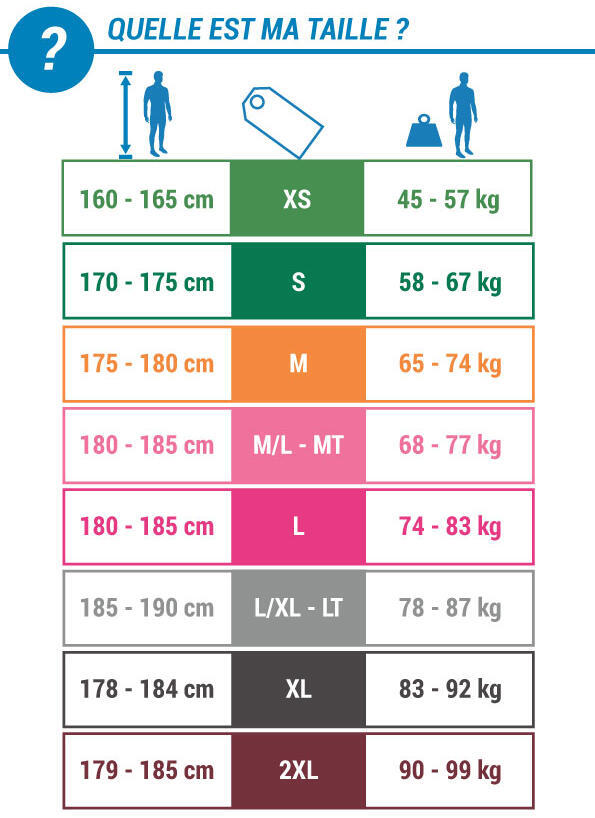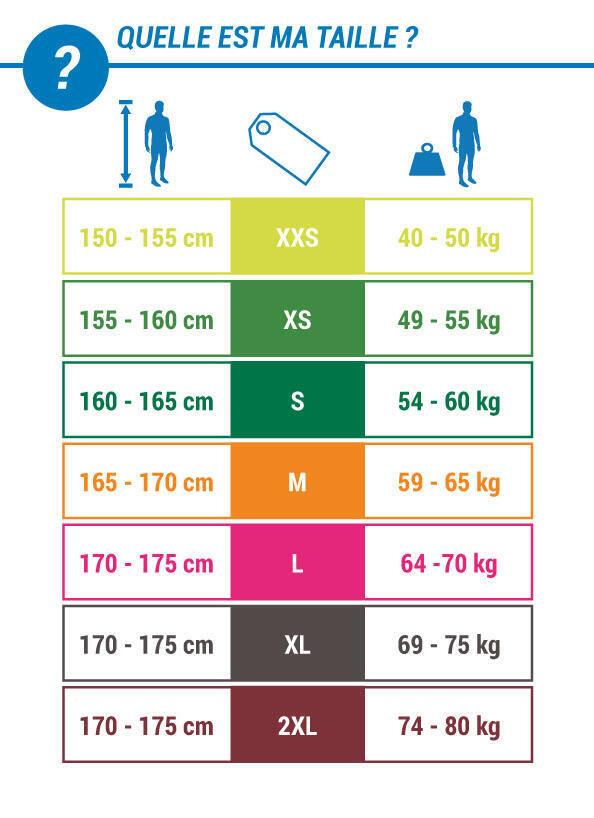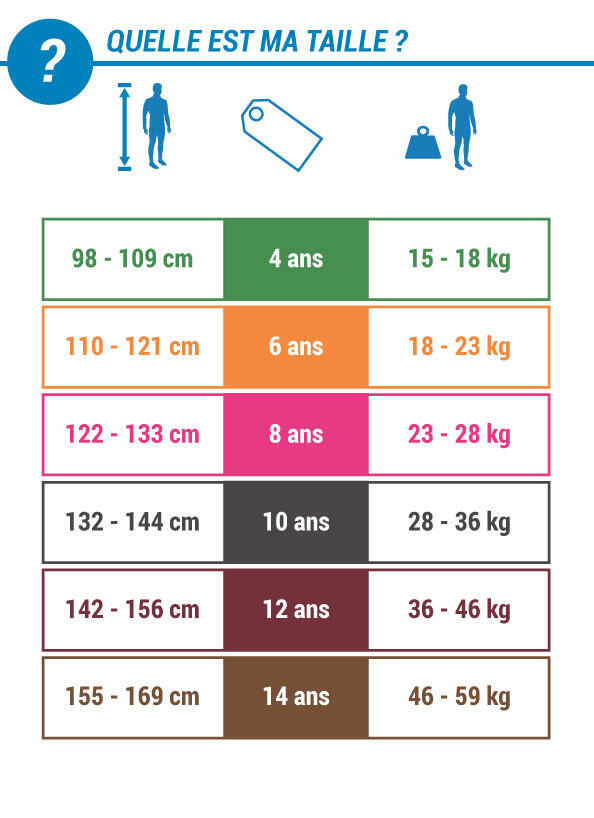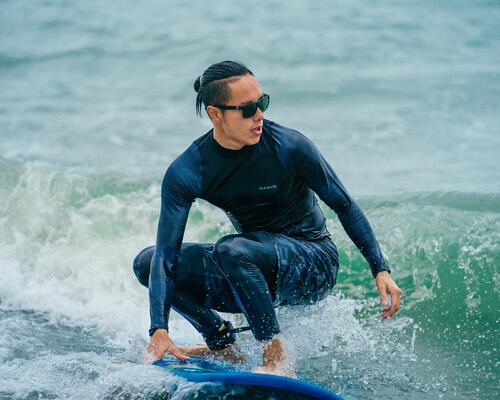Choose your surfing wetsuit according to your body shape
To make the most of the features of your wetsuit, it is necessary to choose the correct size.
A surfing wetsuit should be a very tight fit and there should be no visible folds, the goal being to provide the best possible thermal protection. When dry, it is perfectly normal to feel like it is too tight, this discomfort disappears as soon as the wetsuit gets wet.If you choose a wetsuit that is too big, folds will appear, you will experience irritation and thermal insulation will be reduced (letting in water).
Important: your three sizes do not exactly match those in the table? The chest size is most important, followed by the waistline, and then the hips.
Once you have bought your neoprene wetsuit, remember to take good care of it: rinse with clean water after every session and avoid leaving it to dry in the sun. Shade is neoprene’s best friend…
One last tip: as an experienced surfer, when you leave the water, always keep enough spare energy to take off your drenched wetsuit!
















